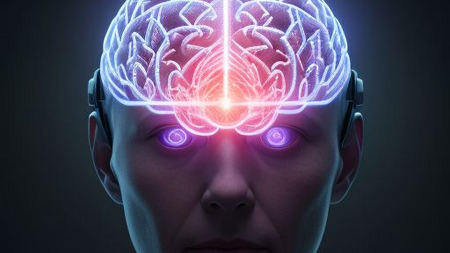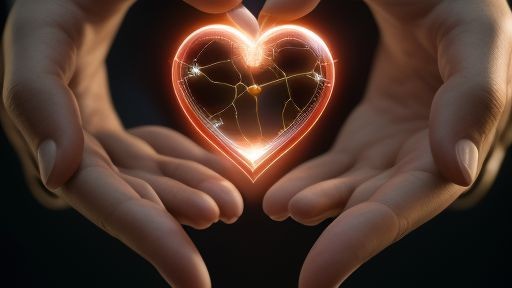Chapter 1: Love as a Quantum State

Defining Love through the Lens of Quantum Mechanics
At first glance, quantum mechanics and love may seem like unlikely companions, but upon closer examination, the two share profound parallels. Quantum mechanics, the branch of physics that studies matter and energy at the smallest scales, has revealed a world that defies our classical intuition. It introduces concepts such as superposition, entanglement, and uncertainty, which can provide fresh insights into the complex nature of love. By exploring love through the lens of quantum mechanics, we can deepen our understanding of the multifaceted and often paradoxical nature of human connection.
The Concept of Superposition
In quantum mechanics, superposition refers to a particle’s ability to exist in multiple states simultaneously until it is observed or measured. Consider the famous thought experiment involving Schrödinger's cat: the cat is both alive and dead until someone opens the box to observe it. Similarly, love can manifest in various forms and emotional states at once. One moment you may feel ecstasy or passion, while the next, confusion or fear may creep in. This multiplicity of feelings is often overwhelming but also reflective of the richness of the human experience.
In relationships, we often navigate through a spectrum of emotions that can coexist. We can experience love and resentment, joy and sadness, hope and disappointment all at the same time. The idea of emotional superposition allows us to acknowledge that our feelings are not linear or confined to singular states. Instead, they exist in a fluid state, much like particles that refuse to conform to our expectations. Recognizing this complexity can enable us to embrace our emotions more fully, allowing for a deeper understanding of ourselves and our partners.
The Entangled Nature of Relationships
Entanglement, another core principle of quantum mechanics, describes a phenomenon where particles become interconnected in such a way that the state of one particle is dependent on the state of another, regardless of the distance separating them. This has striking implications for understanding love. When we enter into deep, meaningful relationships, we may find that our emotional states become intertwined with those of our partners. This interconnectedness creates a bond that can transcend time and space, akin to quantum entanglement.
Consider the experiences of long-distance relationships, where partners maintain their connection despite geographic separation. The emotional bond can remain strong, reflecting the essence of entanglement. Even when miles apart, a couple might sense each other's moods or feelings—this emotional resonance can be attributed to a kind of invisible connection that mirrors the entangled particles of quantum physics. In this way, love can be viewed as a field that connects us to others, shaping our emotional landscapes and reinforcing our sense of unity.
Embracing Uncertainty in Love
Uncertainty is a hallmark of both quantum mechanics and love. The Heisenberg Uncertainty Principle asserts that we cannot simultaneously know both the position and momentum of a particle with absolute certainty. Similarly, in love, the unpredictability of feelings, behaviors, and circumstances often prevents us from fully grasping our relationships. The fear of the unknown can be daunting, as love inherently involves risk.
This uncertainty can manifest in various ways: fear of rejection, uncertainty about the stability of a relationship, or questions about one’s feelings. Unlike the certainties demanded by our logical minds, love invites us to immerse ourselves in ambiguity. Just as particles exist in probabilistic states, we must accept that our emotions may fluctuate and that there are no guarantees in relationships. Embracing this uncertainty allows us to cultivate resilience; it liberates us from the constraints of black-and-white thinking and encourages acceptance of the complexity of our emotional lives.
Love’s Dual Nature
Just as particles exhibit both wave-like and particle-like properties—known as wave-particle duality—so too do our emotions embody dualities that can lead to a richer experience of love. Love is not a simple, one-dimensional emotion. Rather, it is a tapestry woven from passion, attachment, vulnerability, and sometimes pain. This dual nature is vital for growth and connection. It challenges us to confront our insecurities while also inviting us to celebrate our connections.
For instance, consider romantic love, which often oscillates between exhilarating highs and challenging lows. A relationship that brings immense joy can also evoke feelings of fear and insecurity. Similarly, love born from friendship can develop into deeper affection, creating a complex interplay of emotions. Recognizing that love can encompass these contrasting states allows us to fully appreciate its depth and richness. Instead of resisting or denying some emotions, we can learn to embrace them, understanding they are all part of a larger whole.
The Quantum Perspective on Relationships
By applying the principles of quantum mechanics to love, we can cultivate a more nuanced understanding of our relationships. We can learn to appreciate the myriad of emotional states that exist within us and between our partners. This perspective encourages openness—allowing us to acknowledge that love can be chaotic, unpredictable, and multifaceted.
Moreover, embracing love as a quantum state can inspire us to approach our relationships with curiosity rather than fear. When we view our connections as entities that can exist in multiple states, we can navigate uncertainties with grace, understanding that love is often about the entire journey rather than simply seeking stable outcomes.
Ultimately, love—as complex and volatile as it may be—mirrors the fascinating principles of quantum mechanics. By understanding love through the lens of superposition, entanglement, and uncertainty, we can foster richer, more resilient relationships.
In the dance of love, we must be willing to embrace the chaos, recognizing that the beauty of connection lies in its unpredictability and depth. As we delve into the quantum nature of love, we open ourselves to the possibility of true emotional engagement that honors the complexity and vibrancy of human experience.
Join me on my exploration and become part of my quantum journey. This is more than just about a new computer or technical evolution; it represents a fundamental transformation—a revolution of technology, science, and thought. Our values, human perception, and everything we know are about to shift. We stand on the threshold of a new era. I am dedicated to transforming myself and you for the quantum age.
This is the way.

